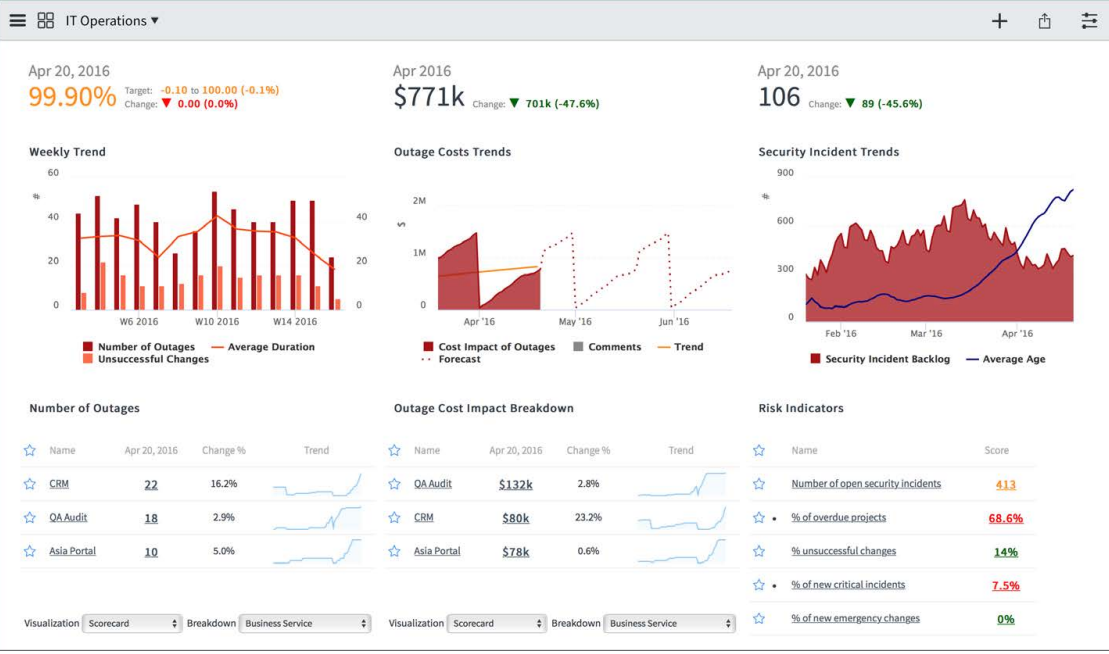ITOM Governance
In this blog post, we'll discuss ITOM Governance functionality and its elements in ServiceNow. ITOM Governance refers to the processes and policies...
![]() The Cloud People
•
2 min read
•
Jun 17, 2024
The Cloud People
•
2 min read
•
Jun 17, 2024

According to ServiceNow, the Configuration Management Database (CMDB) is the single source of truth for all your IT configuration data. It's the foundation for effective IT service management (ITSM), offering a comprehensive view of your entire IT landscape.
The CMDB concept emerged from the IT Infrastructure Library (ITIL) framework, a cornerstone of ITSM established in the 1980s. ITIL emphasized needing a centralized repository to track IT assets and their configurations. A CMDB captures attributes for each CI, including connections and relationships. The CMDB uses the attributes to generate service models that visualize the mapping of these connections and relationships from an architectural and logical perspective. A correct and up-to-date CMDB repository has become indispensable for organizations seeking efficient service delivery.
A CMDB is a specialized database meticulously designed to house critical information about your IT environment, including:
Configuration Items (CIs): This encompasses hardware (servers, desktops), software (operating systems, applications), services (network, communication, security), and facilities (data centers, cabling).
Relationships Between CIs: A powerful aspect of CMDBs is their ability to map intricate relationships between CIs. This dependency map allows you to visualize how changes to one CI might impact others, ensuring service continuity and minimizing disruptions. Relations can be defined in many different variants like “is part of”, “uses - is used by”, “runs - runs on” etc.
ServiceNow, a leader in the ITSM space, seamlessly integrates operative processes with CMDB data:
Incident Management: When incidents strike, ServiceNow can leverage CMDB data to pinpoint impacted CIs and root causes swiftly, leading to faster resolutions.
Problem Management: With CMDB information on historical configurations and CI relationships, ServiceNow can identify patterns and trends that contribute to recurring problems. This empowers proactive problem resolution and minimizes downtime.
Change Management: Before implementing changes, ServiceNow can consult the CMDB to assess potential impacts on dependent CIs. This mitigates risks associated with change implementation and ensures a smooth transition.
Service Asset and Configuration Management (SACM) Alignment: ServiceNow's integrated CMDB fosters a unified platform for managing and tracking IT assets and their configurations, perfectly aligning with the core principles of SACM.
While CMDB focuses on IT configurations, Configuration Service Design Models (CSDM) take a broader view.
As stated in our previous articles, a definition of CSDM is:
“The Common Service Data Model (CSDM) is a framework and common model that gives a standard and shared set of service-related terms and definitions which are leveraged by all ServiceNow products and the platform that will enable and support true service level reporting. It works as a connection between business and technical perspectives. CSDM helps you understand what data belongs in which tables and provides recommended relationships to be used between the Configuration Items (CIs).”
The article can be found here.
CSDM provides a holistic perspective, ensuring that IT services are aligned with the business processes they support.
A CMDB is the foundation of ITSM, providing a centralized repository for vital IT configuration data. When combined with the powerful functionalities of ServiceNow, a CMDB empowers organizations to achieve superior service delivery, improved incident resolution, and proactive problem management. By using CMDB, CSDM and ServiceNow you can establish a robust system for managing your IT infrastructure and ensuring seamless service delivery.
ServiceNow emphasizes that a CMDB should be a living repository, constantly updated with the latest configuration information to ensure accuracy and reliability.
ServiceNow highlights the importance of automating data population within the CMDB to streamline the process and minimize manual effort. (More on this subject in upcoming articles.)
ServiceNow promotes using CMDB data for proactive service management, enabling organizations to anticipate and prevent potential issues before they disrupt operations.
Want to read more about CMDB? Read our article and learn how to maintain your CMDB with some essential ServiceNow functionalities. Keep your data accurate and up-to-date for improved decision-making and operational efficiency.
➡️ The most important CMDB Maintenance Functionalities in ServiceNow

In this blog post, we'll discuss ITOM Governance functionality and its elements in ServiceNow. ITOM Governance refers to the processes and policies...

What is Scrabble? Scrabble is a word building game. Up to four players draw seven letters and create words out of them. There is a dedicated...

Creating a CMDB with data is one thing. Maintaining the data and keeping it up-to-date is another. This article provides 4+1 ServiceNow...